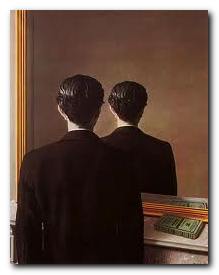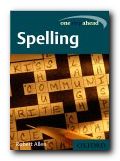getting your essay off to a good start
The essay introductions that follow are all taken from third-year undergraduate courses in literary studies. They are not being offered as models of perfection – but all of them met the requirements for a first-class grade. The fifth example is from a coursework assignment at postgraduate level – an MA in Literary Studies.
Essay introductions – Example 1
Question
In an essay of about 1,500 words analyse either ‘A Painful Case’ by James Joyce or ‘The Old Chief Mshlanga’ by Doris Lessing, paying close attention to narrative technique, including narrative voice, characterization, imagery and symbolism, dialogue and descriptive detail.
Answer
‘A Painful Case’ by James Joyce is a short story taken from a collection entitled ‘Dubliners’, which was first published in 1914. Joyce makes use of a variety of narrative techniques and literary devices in the construction of his work.
Joyce’s chosen method of discourse is a third-person omniscient narrator. Unlike the first-person narrative mode, which only gives access to the thoughts and feelings of one of the characters, an omniscient narrator has the advantage of being in a position to know everything about all the characters in a story. The opening sentence provides an example of how the narrator is able to reveal the opinions of the main character through focalization: ‘Mr James Duffy lived in Chapelizod …because he found all the other suburbs of Dublin mean, modern and pretentious.’ (1) The narrator is speaking, but the viewpoint is that of Mr Duffy, and is presented without any narrative comment. The reader is, therefore, free to draw his or her own conclusions as to what this reveals about the personality of Mr Duffy, without guidance from the narrator.
Overall grade=88
[The overall grade is determined by a number of qualities in the work – not simply the introduction.]
Essay introductions – Example 2
Question
‘The language of poetry resembles dancing; it has no purpose beyond itself. “Dancing goes nowhere”‘. Discuss the ideas in Paul Valéry’s essay ‘Remarks on Poetry’ in the course materials by considering in detail a passage from The Waste Land and a paragraph from Mrs Dalloway.
Answer
Mrs Dalloway displays many of those aspects of language which Paul Valéry identifies as essentially poetic. I have chosen to concentrate upon paragraph two on page 124 (Grafton edition) to illustrate this argument.
Going and coming, beckoning, signalling, so the light and shadow, which now made the wall grey, now the bananas bright yellow, now made the Strand grey, now made the omnibuses bright yellow, seemed to Septimus Warren Smith lying on the sofa in the sitting room; watching the watery gold glow and fade with the astonishing sensibility of some live creature on the roses, on the wall-paper. Outside the trees dragged their leaves like nets through the depths of the air; the sound of water was in the room, and through the waves came the voices of birds singing. Every power poured its treasures on his head, and his hand lay there on the back of the sofa, as he had seen his hand lie when he was bathing, floating, on the top of the waves, while far away on shore he heard dogs barking and barking far away. Fear no more, says the heart in the body; fear no more.
Attention is drawn to the language itself, to the relationship between words and phrases. For example, the alliterative quality of words is clearly exploited in phrases such as ‘seemed to Septimus Warren Smith lying on the sofa in the sitting room’ where the repetition of the soft ‘s’ sound (carried on still further into the next clause of the sentence) imitates the sound of rustling leaves or water. Alliteration and assonance work together to develop an ‘ebbing’ or ‘lapping’ rhythm which underlines the imagery of waves and water developed throughout the paragraph: ‘watching the watery gold glow …’
Similarly, words are grouped and repeated so as to reinforce a sense of underlying patterning. Notably the first sentence has alternating images of light and shadow, yellow and grey, and repeated sequences of words and stresses: ‘which now made the wall grey, now the bananas bright yellow, now made the Strand grey, …’
Overall grade=80
[The overall grade is determined by a number of qualities in the work – not simply the introduction.]
Essay introductions – Example 3
Question
According to Pierre Macherey, the ideology of a literary work resides in its incompleteness, in its significant gaps and silences. With reference to two texts from different genres, suggest how Macherey’s theory of ideology might yield new insights and meanings in literary criticism.
Answer
No text is ‘complete’ in itself according to Macherey. The words on the page may appear to produce a clear-cut, easily discemable meaning, however if we accept this at face value we are not appreciating the work as a whole, for as well as the explicit meaning of a work, the reader should also be aware of the gaps, silences and contradictions inherent in a text. Only in this way can we understand the full significance of a literary work, and reveal its relation to the circumstances in which it was produced.
Although Macherey argues that the silences are a prior condition of the text, in that without absences the text itself would not exist, the reader must first examine what is given, the explicit ideas and arguments presented, in order to spot the gaps and silences. When we first read ‘A Sahib’s War’ by Rudyard Kipling, for example, we learn about the characters, the events which make up the story, note the use of an unusual narrative technique and also form opinions as to the meaning or intention of the story. From this basis we can then go on to consider elements not present, and judge whether these reinforce or contradict the explicit meaning of the text.
Overall grade=88
[The overall grade is determined by a number of qualities in the work – not simply the introduction.]
Essay introductions – Example 4
Question
‘silence is both a condition of women’s oppression and a part of their language’. With detailed reference to at least TWO texts from different genres, discuss the relation between gender and silence
Answer
Simone de Beauvoir, in her book, The Second Sex, says that ‘One is not born but rather becomes a woman’ and goes on to say that there is no such thing as a female nature, consisting of essentially female qualities. She holds that concepts of femininity are socially constructed and not biologically determined.[1]
At the time de Beauvoir wrote her book, the currently operating social construct was that language in the public domain was very much organised by males and the language in the private domestic world was organised by women. The implication being, that men’s language dealt with the ‘weighty’ issues of the world, whilst women’s language dealt with the domestic trivia.
To this one could also add that, historically, women have only been able to guarantee their economic security through marriage. This meant that sexual relations were also economic relations and therefore, whilst marriage satisfied the problem of the woman’s economic insecurity, it constrained her to the public silence required of her by both society and her husband. At the same time, of course, we could usefully argue that the husband was equally a ‘prisoner of the system’ in that society demanded of him, a wife who obeyed the rules and accepted her socially constructed subordinate role. A husband who could not keep his wife within the limits of expected behaviour, could expect criticism of his failure, from society. The effect of this pressure was to force women into roles that were recurrent stereotypes, virgin, whore, spinster, etc. (p.9)
Grade = First class
[The overall grade is determined by a number of qualities in the work – not simply the introduction.]
Essay introductions – Example 5
Question
Discuss how a scholarly editor of a novel by Charles Dickens might approach the task of establishing an accurate text. You should outline both the practical and theoretical questions involved.
Answer
It is acknowledged in textual criticism that any act of transmission is inherently partial to corruption. Moreover, that when further copies of a text are made new errors can be introduced. The consequences of this means that in novels for instance (subject to compositorial mistakes, deletions and so on), the first and subsequent editions seldom presents the reader with the author’s intentions or even his exact words. As a printed text, Bleak House has been subject to the above conditions. The scholarly editor then is faced with the task of trying to present the text as accurately as Dickens intended, elucidating features which have been obscured by misreadings or the passage of time. The key word here is ‘intended’, for the status of authorial intention has become one the most contentious issues in twentieth century textual theory, and the textual scholar’s choices in editing a critical text (choices which at some point must be conjectural) subject to intense scrutiny.
The problem of intention is closely allied to the choice of copy text (the version on which to base a single edition) – and before the editor decides which version of the novel to adopt as copy-text, he must first consider what system or rationale to use to make these decisions. The most dominant copy-text theory in the second half of the twentieth century has been W.W. Greg’s. Briefly, Greg called into question the then-held belief that the authoritative copy-text should be the last edition published in the author’s lifetime. He proposed that wherever possible the editor should select a copy-text on the basis of its accidentals (punctuation, spelling, and typographical matters such as the use of italics), this being as close as possible to authorial intention (therefore usually a manuscript if one exists), and that this copy-text should be emended when it could be shown that later versions of the text contained substantive changes introduced by the author. After this assimilative process, the editor would then assemble a new eclectic version of the text, one based on editorial interpretation of an author’s putative intentions.
Overall grade=88
[The overall grade is determined by a number of qualities in the work – not simply the introduction.]
© Roy Johnson 2009
More on How-To
More on literary studies
More on writing skills
 Most people understand the rules. If you quote from somebody else’s work, you put the words in quote marks and acknowledge the source, either as part of your text or in an endnote or footnote. Details of
Most people understand the rules. If you quote from somebody else’s work, you put the words in quote marks and acknowledge the source, either as part of your text or in an endnote or footnote. Details of 